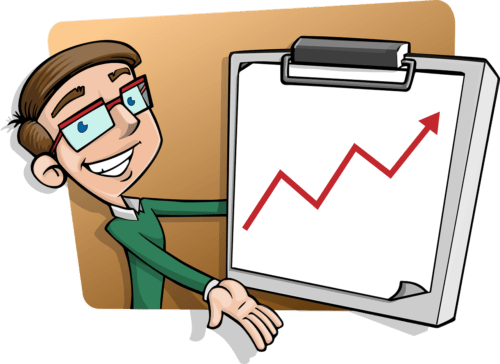In the fast-paced and ever-changing business landscape, being able to accurately forecast future trends and developments is crucial for staying ahead of the competition. That’s why investing in forecasting training is a smart choice for professionals looking to sharpen their skills and gain a competitive edge. This comprehensive training program will equip you with the knowledge and techniques necessary to analyze historical data, identify patterns, and make informed predictions. Whether you’re a business owner, manager, or analyst, this article highlights the importance of forecasting training and how it can positively impact your decision-making processes.
Importance of Forecasting Training
Forecasting is a critical aspect of business planning and decision-making. It involves predicting future trends and outcomes based on past and present data, which enables organizations to make more informed choices and allocate resources effectively. However, forecasting is a complex process that requires a deep understanding of statistical methods, data analysis, and model selection. This is where forecasting training becomes invaluable.
Benefits of Forecasting Training
Forecasting training offers numerous benefits to individuals and organizations alike. Firstly, it equips individuals with the necessary skills and knowledge to conduct accurate and reliable forecasts. This leads to improved decision-making, as managers and analysts can confidently rely on the forecasts when planning for the future.
Secondly, forecasting training allows organizations to enhance their strategic planning and resource allocation. Accurate forecasts help identify potential risks and opportunities, allowing organizations to allocate their resources effectively and stay ahead of the competition.
Furthermore, forecasting training promotes data-driven decision-making. By understanding statistical methods and data analysis techniques, individuals are able to use data effectively to guide their decisions. This leads to more objective and informed choices, reducing the reliance on intuition and gut feelings.
Role of Forecasting Training in Business Planning
Effective forecasting is crucial for business planning and strategy development. A well-executed forecasting process enables organizations to anticipate market trends, customer demands, and other external factors that impact their operations. This information can then be used to determine production levels, inventory management, sales projections, and financial planning.
Forecasting helps businesses identify potential risks and uncertainties, enabling them to develop contingency plans and mitigate potential negative impacts. By having a clear understanding of future demand, organizations can optimize their supply chain, manage inventory effectively, and streamline production processes. This leads to improved efficiency and cost savings.
Additionally, forecasting training plays a vital role in aligning business objectives with market realities. By accurately predicting customer preferences and behavior, organizations can tailor their products and services to meet customer needs. This enhances customer satisfaction and loyalty, which ultimately translates into increased revenues and market share.
Types of Forecasting
There are several types of forecasting techniques, each serving a different purpose and requiring specific skills and tools. Understanding these types is essential for effective forecasting training.
Qualitative Forecasting
Qualitative forecasting relies on expert judgment, opinions, and market research to make predictions about the future. This approach is commonly used when historical data is limited or unavailable. Qualitative forecasting methods include brainstorming sessions, Delphi technique, and market surveys. Forecasting training covers these techniques and teaches individuals how to gather and analyze qualitative data to make accurate predictions.
Quantitative Forecasting
Quantitative forecasting uses historical data and statistical models to predict future outcomes. This approach is based on the assumption that past patterns and trends can be used to forecast future behavior. Quantitative forecasting methods include time series analysis, regression analysis, and moving averages. Forecasting training focuses on teaching individuals how to use statistical software and techniques to analyze data, identify patterns, and develop accurate forecasts.
Causal Forecasting
Causal forecasting involves identifying cause-and-effect relationships between variables to make predictions. This approach considers factors such as economic indicators, demographic changes, and market trends to forecast future outcomes. Causal forecasting techniques include regression analysis, correlation analysis, and econometric models. Forecasting training emphasizes the importance of understanding causal relationships and teaches individuals how to incorporate these factors into their forecasting models.

Key Elements of Effective Forecasting Training
To ensure the effectiveness of forecasting training, several key elements should be considered. These elements provide individuals with the necessary foundation to develop accurate and reliable forecasts.
Understanding Statistical Methods
Forecasting training should provide a comprehensive understanding of statistical methods and techniques. This includes learning about probability, distribution functions, hypothesis testing, and regression analysis. By mastering these statistical concepts, individuals can effectively analyze data and develop accurate forecasts.
Data Collection and Analysis
Collecting and analyzing data is a crucial step in the forecasting process. Forecasting training should cover data collection methods, data cleaning techniques, and data analysis tools. Individuals should learn how to identify relevant data sources, extract useful information, and transform raw data into meaningful insights.
Model Selection and Evaluation
Choosing the right forecasting model is essential for accurate predictions. Forecasting training should teach individuals how to assess different forecasting models and select the most appropriate one for their specific needs. Additionally, individuals should learn how to evaluate the performance of their models and make necessary adjustments to improve accuracy.
Forecasting Techniques and Tools
Forecasting training introduces individuals to various techniques and tools used in the forecasting process. These techniques and tools enable individuals to analyze data, identify patterns, and develop accurate forecasts.
Time Series Analysis
Time series analysis is a fundamental technique used in forecasting. It involves analyzing data collected over time to identify patterns and trends. Forecasting training teaches individuals how to use time series analysis to develop forecasts based on historical data.
Regression Analysis
Regression analysis is another commonly used technique in forecasting. It involves identifying relationships between variables and using those relationships to make predictions. Forecasting training focuses on teaching individuals how to use regression analysis to develop accurate forecasts based on historical data.
Moving Averages
Moving averages is a simple but effective technique used in forecasting. It involves calculating the average of a set of data points over a specified time period. Forecasting training teaches individuals how to use moving averages to identify trends and develop forecasts.
Exponential Smoothing
Exponential smoothing is a technique used to forecast time series data. It assigns weights to historical data points, giving more importance to recent data. Forecasting training covers exponential smoothing methods and teaches individuals how to use them to develop accurate forecasts.
Simulation Models
Simulation models simulate real-world scenarios to predict future outcomes. Forecasting training introduces individuals to simulation techniques and teaches them how to develop simulation models to make accurate forecasts.

Training Methods for Forecasting
Forecasting training can be delivered through various methods, each with its own advantages and disadvantages. The choice of training method depends on factors such as budget, time constraints, and the specific needs of the organization.
Classroom Training
Classroom training involves instructor-led sessions conducted in a traditional classroom setting. This method allows for real-time interaction with the instructor and facilitates group discussions and hands-on activities. Classroom training provides a structured learning environment and allows participants to ask questions and seek clarification. However, it may require participants to travel to a specific location and can be time-consuming.
Online Training
Online training, also known as e-learning, delivers training materials and resources through a web-based platform. This method offers flexibility and convenience as participants can access the training materials at their own pace and from any location with an internet connection. Online training allows participants to learn at their own pace and provides opportunities for self-assessment. However, it may lack the interaction and engagement that classroom training provides.
On-the-Job Training
On-the-job training involves learning while performing actual job tasks. This method allows participants to apply their forecasting skills in real-world scenarios, enhancing their learning experience. On-the-job training promotes experiential learning and provides opportunities for immediate feedback and guidance. However, it may require a longer duration and can be challenging to implement for large groups of participants.
Workshops and Seminars
Workshops and seminars are short-term training events that focus on specific topics or skills. These sessions typically involve presentations, group discussions, and hands-on activities. Workshops and seminars provide opportunities for networking and knowledge sharing among participants. However, they may only provide a brief overview of forecasting concepts and may not offer in-depth training.
When selecting a training method for forecasting, organizations should consider their specific needs, budget constraints, and the desired learning outcomes. A combination of different training methods can also be effective in providing a comprehensive and well-rounded training experience.
Forecasting Training for Different Industries
Forecasting training is applicable to a wide range of industries, as accurate predictions are crucial for informed decision-making in any business environment. Here are a few examples of how forecasting training can benefit different industries:
Retail Industry
In the retail industry, accurate forecasting is essential for managing inventory levels, optimizing supply chain operations, and improving sales projections. Forecasting training equips retail managers with the skills and knowledge to analyze sales data, identify seasonal trends, and predict customer demand.
Manufacturing Industry
In the manufacturing industry, forecasting is vital for production planning, resource allocation, and operational efficiency. Forecasting training enables manufacturing professionals to analyze historical data, identify production patterns, and develop accurate forecasts to optimize production levels and minimize inventory holding costs.
Finance Industry
The finance industry heavily relies on accurate forecasting for financial planning, investment analysis, and risk management. Forecasting training enables finance professionals to analyze market trends, predict interest rates, and forecast financial outcomes to make informed investment decisions and develop robust financial strategies.
Healthcare Industry
In the healthcare industry, forecasting plays a crucial role in resource allocation, capacity planning, and patient demand management. Forecasting training equips healthcare administrators and managers with the skills to analyze patient data, predict healthcare needs, and optimize resource allocation to deliver efficient and effective healthcare services.
These examples highlight the diverse applications of forecasting training across different industries. By enhancing forecasting skills, professionals in these industries can make informed decisions based on accurate predictions and improve overall business performance.

Challenges in Forecasting Training
While forecasting training offers numerous benefits, it also comes with its fair share of challenges. Understanding and addressing these challenges is essential to ensure the effectiveness of the training.
Bias and Subjectivity
Forecasting involves making predictions based on historical data and assumptions about the future. However, biases and subjectivity can unintentionally influence forecasters’ judgments and decisions. Forecasting training should address these challenges by emphasizing the importance of objectivity, providing techniques to reduce bias, and promoting a data-driven approach.
Uncertainty and Variability
The future is inherently uncertain, and forecasting is an attempt to predict what might happen. However, unforeseen events, market fluctuations, and external factors can introduce variability and uncertainty into forecasts. Forecasting training should teach individuals how to account for uncertainty, develop contingency plans, and adopt flexible forecasting methods that can adapt to changing circumstances.
Data Quality and Availability
The accuracy and reliability of forecasts heavily depend on the quality and availability of data. Inadequate or poor-quality data can lead to inaccurate forecasts and questionable decision-making. Forecasting training should emphasize the importance of data quality, provide techniques for data cleaning and validation, and teach individuals how to deal with missing or incomplete data.
Addressing these challenges through comprehensive training and continuous skill development ensures that individuals have the tools and knowledge to overcome these obstacles and produce accurate and reliable forecasts.
Measuring the Effectiveness of Forecasting Training
Measuring the effectiveness of forecasting training is essential to assess its impact on individuals and organizations. Several key metrics can be used to evaluate the effectiveness of forecasting training.
Tracking Forecast Accuracy
One of the most straightforward ways to measure the effectiveness of forecasting training is to track the accuracy of the forecasts. Comparing the predicted values to the actual outcomes allows organizations to assess the precision of the forecasts and identify areas for improvement.
Monitoring Forecasting Performance
Monitoring forecasting performance involves evaluating the overall forecasting process, including data collection, analysis, and model selection. This helps identify any bottlenecks or inefficiencies in the forecasting process and allows organizations to make necessary adjustments to improve performance.
Feedback and Continuous Improvement
Collecting feedback from participants is crucial to measure the effectiveness of forecasting training. Surveys, interviews, and follow-up assessments can provide valuable insights into the participants’ learning experience, satisfaction levels, and their ability to apply the acquired skills and knowledge in their work. This feedback can then be used to improve the training program and address any gaps or shortcomings.
Continuous improvement is also essential for measuring the effectiveness of forecasting training. Monitoring the application of forecasting skills in practice and assessing the impact of the training on business outcomes helps identify areas for improvement and ensures that the training remains relevant and up-to-date.
By measuring the effectiveness of forecasting training, organizations can identify strengths and weaknesses, make necessary adjustments, and ensure that the training delivers the desired outcomes.
Best Practices for Forecasting Training
To maximize the effectiveness of forecasting training, organizations should adopt certain best practices that enhance the learning experience and ensure long-term success.
Developing a Forecasting Strategy
Before embarking on forecasting training, organizations should develop a clear and comprehensive forecasting strategy. This strategy should outline the objectives, goals, and desired outcomes of the training program. It should also address the specific forecasting needs of the organization and provide guidance on the selection of forecasting techniques and tools.
Involving Stakeholders
Involving stakeholders throughout the forecasting training process is crucial for its success. This includes engaging senior management, department heads, and other key decision-makers in the planning and implementation of the training program. By involving stakeholders, organizations ensure that the training aligns with the overall business objectives and that the acquired skills and knowledge are applied effectively.
Ongoing Education and Skill Development
Forecasting techniques and tools evolve over time, and it is essential for individuals to continuously update their skills and knowledge. Organizations should promote ongoing education and skill development through refresher courses, workshops, and conferences. This ensures that individuals stay up-to-date with the latest advancements in forecasting and can apply the most effective techniques in their work.
By following these best practices, organizations can create a culture of continuous learning and improvement, maximize the benefits of forecasting training, and drive long-term success.
Future Trends in Forecasting Training
The field of forecasting is continually evolving, driven by technological advancements and changing business landscapes. Forecasting training needs to adapt to these trends to remain relevant and effective. Here are some future trends in forecasting training to keep an eye on:
Advancements in Predictive Analytics
Predictive analytics, powered by machine learning and artificial intelligence, is revolutionizing the field of forecasting. These technologies enable organizations to analyze vast amounts of data, identify complex patterns, and develop accurate predictive models. Forecasting training should incorporate these advancements and teach individuals how to leverage predictive analytics tools and techniques to enhance their forecasting capabilities.
Integration of Artificial Intelligence
Artificial intelligence (AI) is becoming increasingly prevalent in forecasting. AI-powered forecasting models can analyze complex datasets, identify non-linear patterns, and make accurate predictions. Forecasting training should focus on teaching individuals how to work with AI algorithms, interpret their outputs, and leverage AI capabilities to develop more accurate and reliable forecasts.
Real-time Forecasting
Real-time forecasting is gaining importance due to the increasing availability of real-time data and the need for immediate decision-making. Real-time forecasting allows organizations to respond quickly to changing market conditions, customer preferences, and other relevant factors. Forecasting training should incorporate real-time forecasting techniques and teach individuals how to effectively analyze and interpret real-time data to make timely predictions.
By staying abreast of these future trends, organizations can ensure that their forecasting training remains relevant and provides individuals with the skills and knowledge needed to keep pace with technological advancements and changing business needs.
In conclusion, forecasting training is of paramount importance in today’s dynamic business environment. It equips individuals with the skills and knowledge to develop accurate and reliable forecasts, enhancing decision-making, and strategic planning. By understanding the different types of forecasting, key elements of effective forecasting training, and available techniques and tools, individuals can become proficient in forecasting. By considering various training methods and tailoring them to specific industries, organizations can ensure that their employees receive comprehensive and relevant forecasting training. Despite the challenges that come with forecasting, measuring the effectiveness of training, following best practices, and staying updated with future trends can maximize the benefits of forecasting training and drive long-term success.
